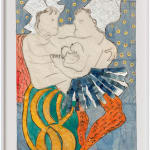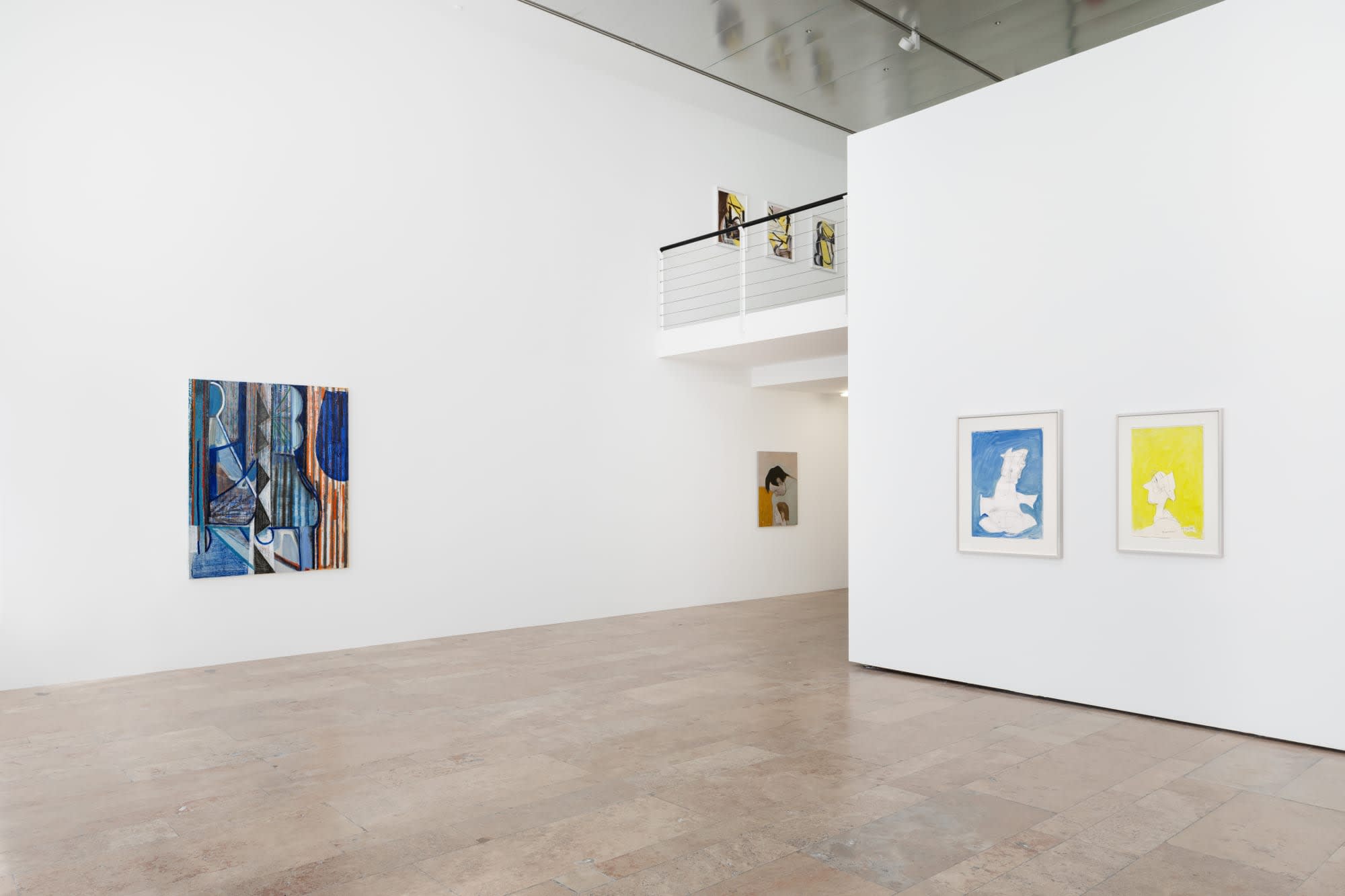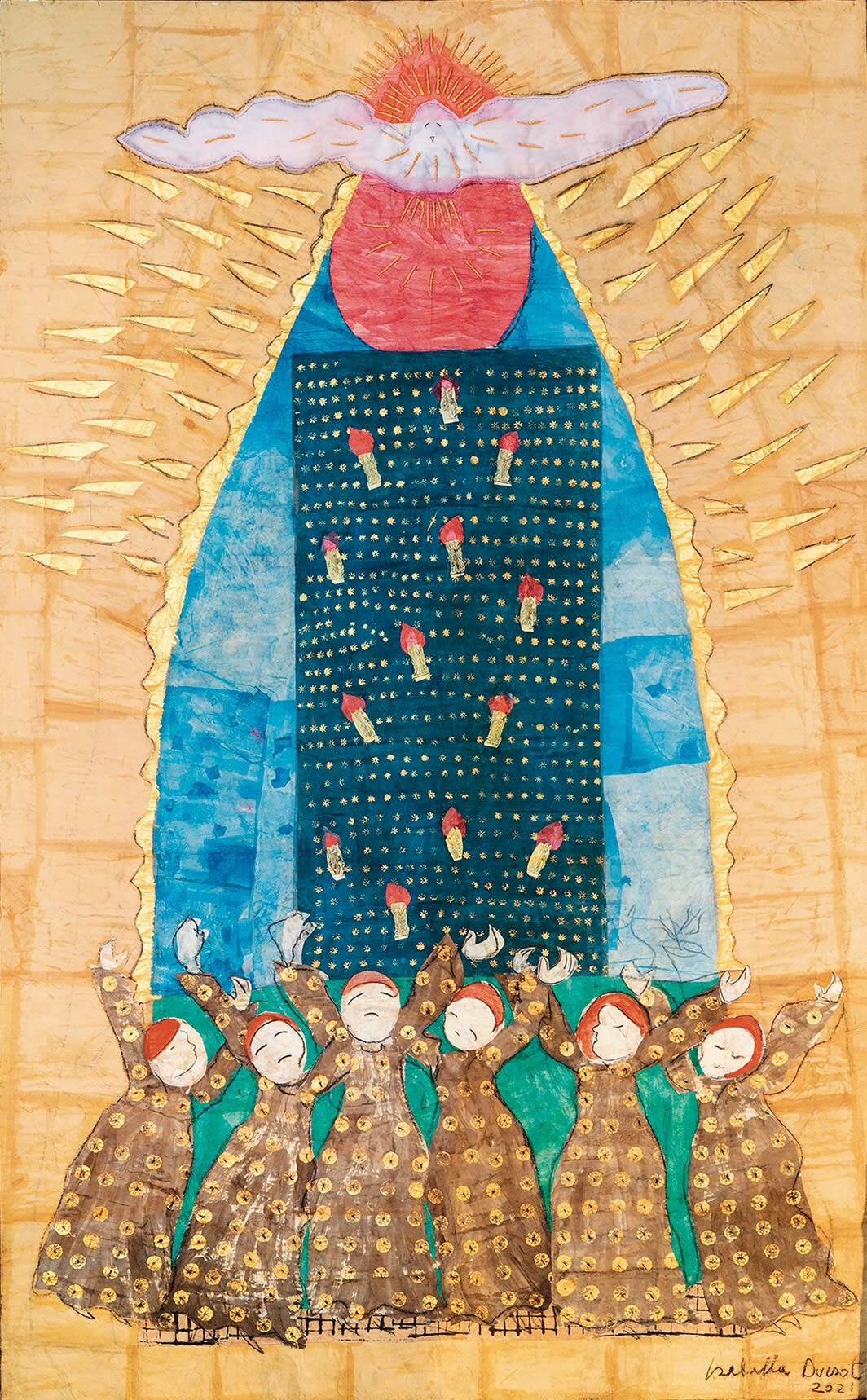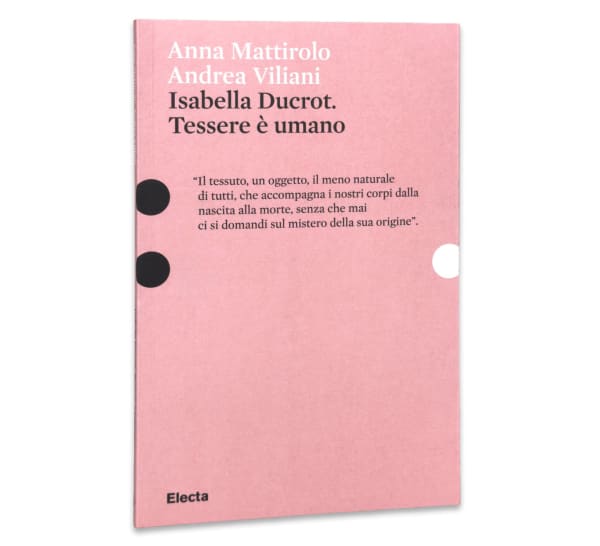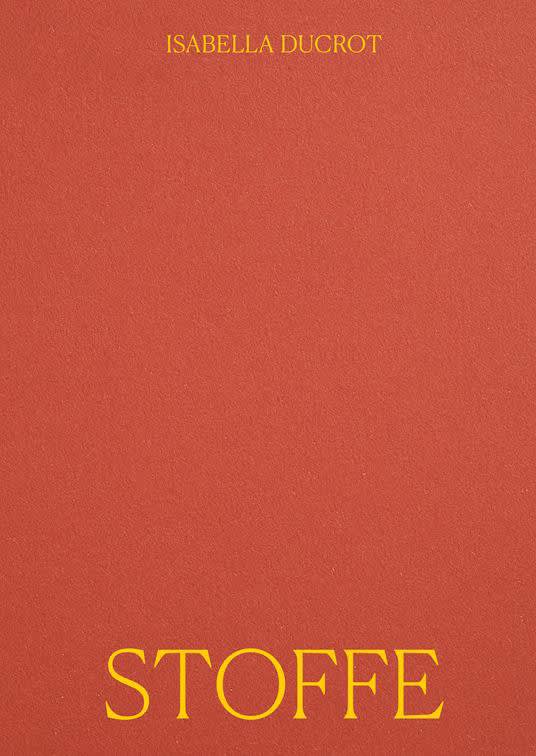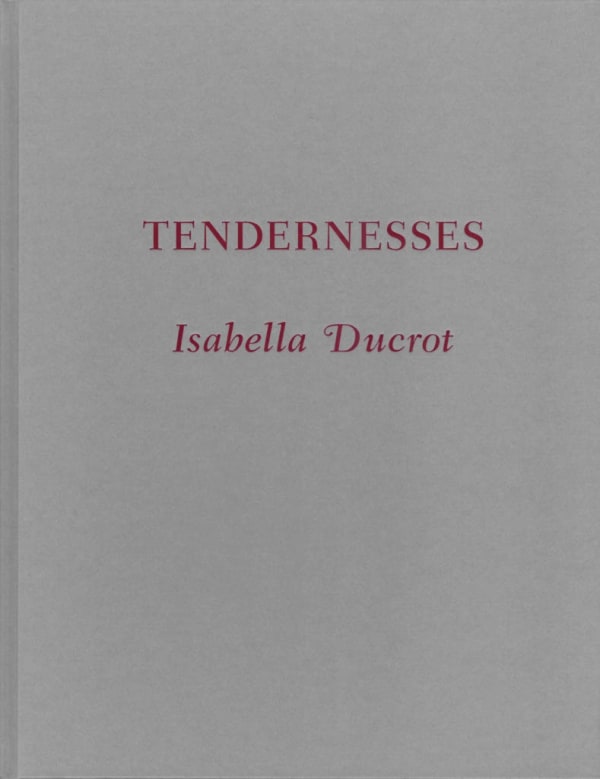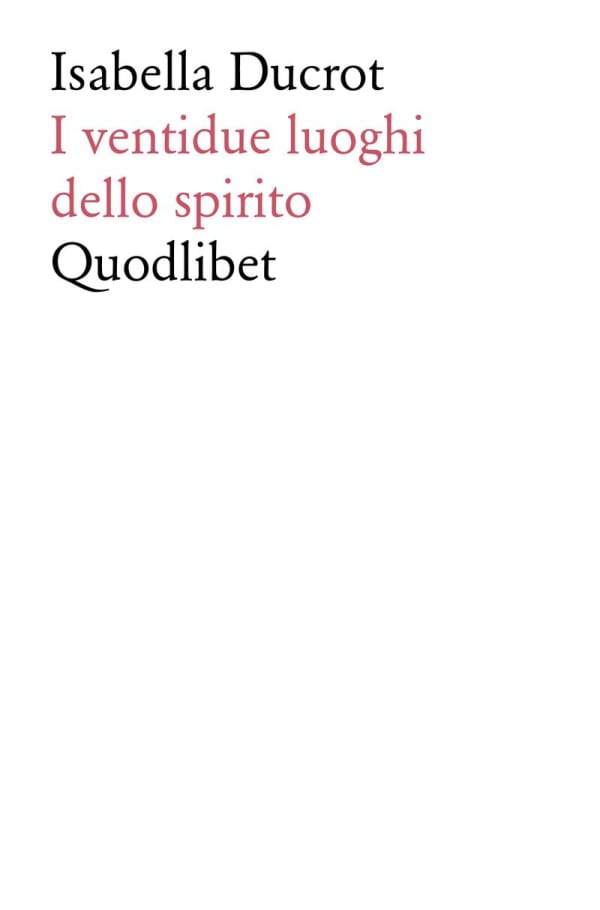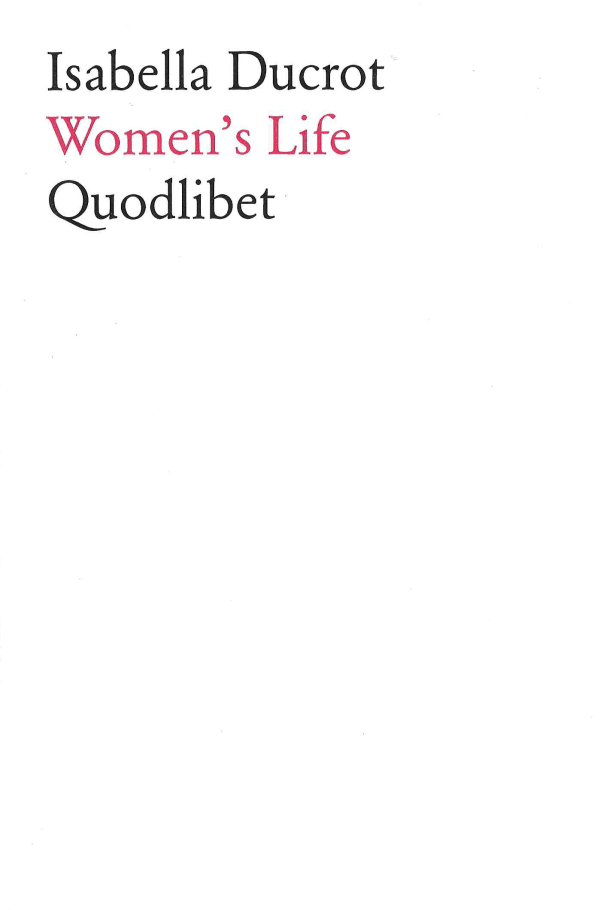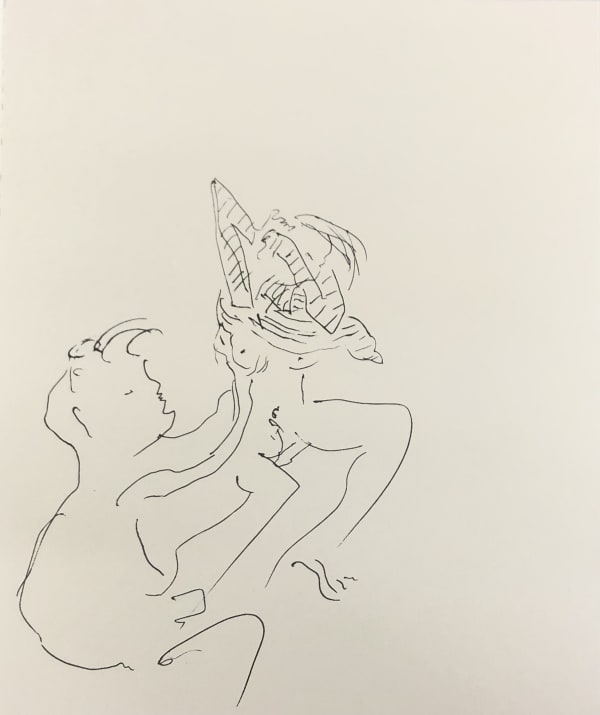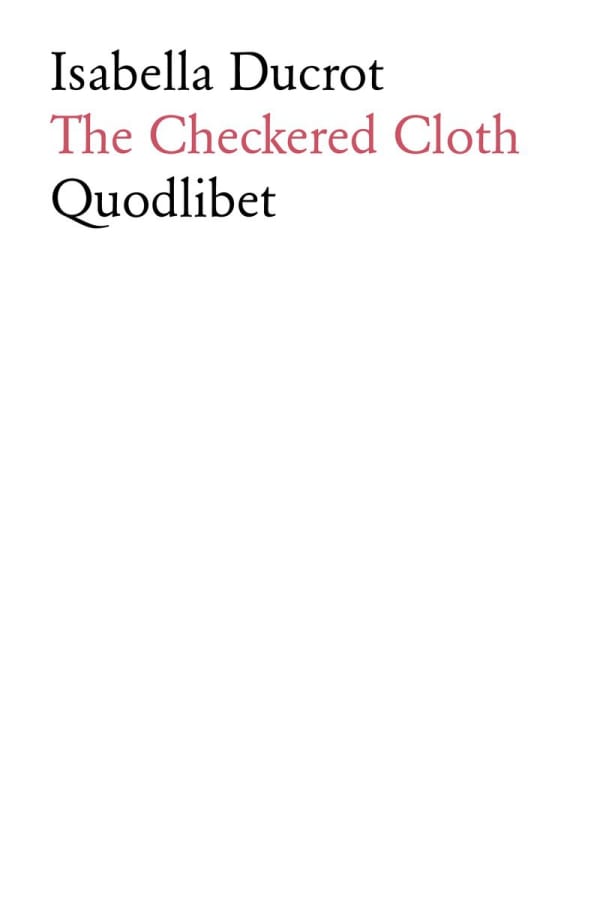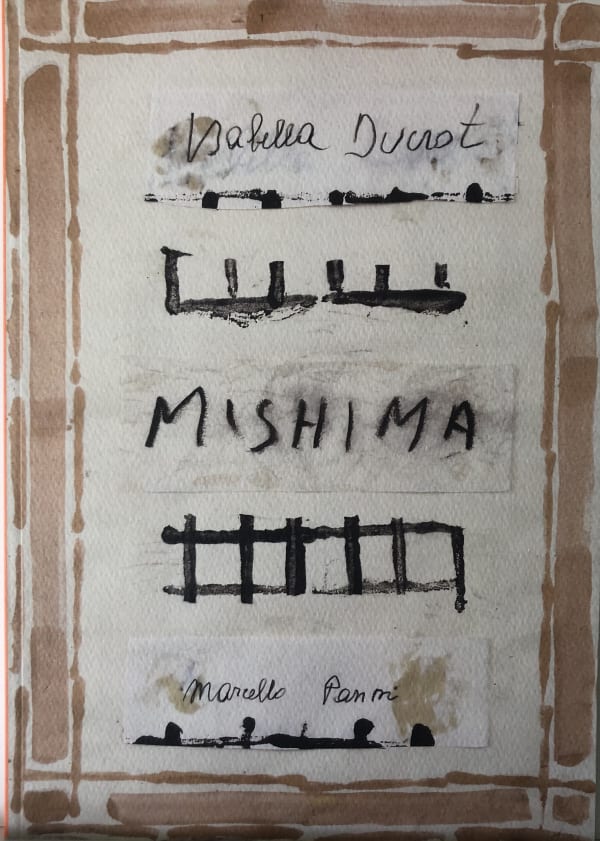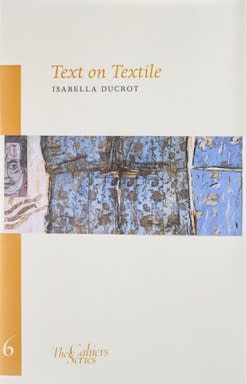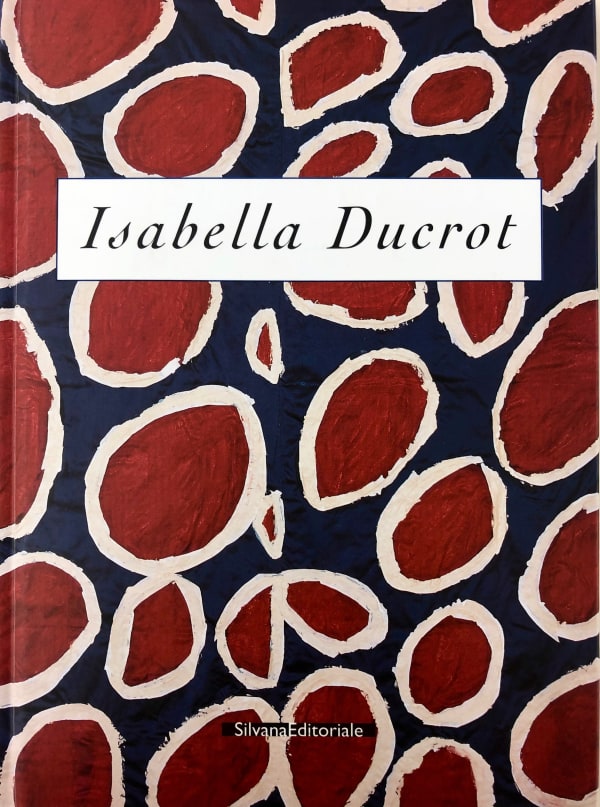Isabella Ducrot
-
Biography
Born 1931 in Naples, Italy
Lives and works in Rome, Italy
Isabella Ducrot is known for her devoted use of woven cloth as the founding material of her paintings. Only beginning her artistic career later in life, the Italian artist has assembled a sublime collection of antique textiles through her extensive travels through Asia, originating primarily from Turkey, India, China, Tibet and Afghanistan.
Ducrot’s first source of inspiration comes from the so-called weft of these fabrics. By bringing them to light and stretching them ever-so lightly, whether linen, silk, wool or other, the weft becomes visible, revealing the original architecture of the material, composed of crossing threads and voids. Ducrot has specifically made the checkered cloth her signature material, believing strongly in its expressive force, seeing it as an independent formal element and end unto itself. The extreme nudity of the checkered pattern offers the artist endless possibilities for artistic intervention.
In 2026, Madre Museum in Naples will present the first ever retrospective of the artist, curated by Adam Weinberg. In 2024 Ducrot had a comprehensive solo show at Le Consortium Museum in Dijon. She also created a monumental scenography for Dior's spring 2024 haute couture show. Ducrot's large-scale installation Omaggio a Mishima (Homage to Mishima) was part of Art Basel's Unlimited sector in 2022. Her recent solo exhibitions include MAXXI a Taormina, Palazzo Ciampoli; Galerie Gisela Capitain, Cologne; Sadie Coles HQ, London; Petzel, New York; Standard, Oslo; Belenius Stockholm; San Giuseppe alle Scalze a Pontecorvo, Napoli; T293, Rome; Galerie Mezzanin, Geneva; Capitain Petzel, Berlin; Spazio Parlato, Palermo and Museo Archeologico Nazionale di Napoli. In 2014, Ducrot held a significant exhibition at the Galleria Nazionale d'Arte Moderna e Contemporanea in Rome. Additionally, she participated in the Venice Biennale in 1993 and 2011.
Ducrot is also the author of numerous publications including Women’s Life (2021); La stoffa a quadri (also translated and published in English as The Checkered Cloth) (2019); Suonno. Il sonno e il sogno nella canzone napoletana (2012); Fallaste Corazón (2012); Pensiero religioso ed elettricità (2011); La Matassa Primordale (2008); and Bianca di Pelle (1995). Her work is held in the permanent collection of EMMA – Espoo Museum of Modern Art; Galleria Nazionale d’Arte Moderna e Contemporanea, Rome; Le Consortium, Dijon; MAMCO, Geneva; MAXXI - Museo nazionale delle arti del XXI secolo, Rome, among others.
-
-

-
-
I remember the first time I saw the ceremonial garments of the sultans of the Ottoman Empire on display in the Topkapi Palace museum in Istanbul; I was deeply struck by their size, they were out of proportion and revealed the sovereign indifference of the court tailors: they had taken no account of the normal anatomy of the human being.
– Isabella Ducrot
-

-

-
Ducrot's depictions of flowers and ceramic vessels symbolize her idea of happiness: "Happiness for me is being seated around a table with one friend, with more friends, with family... cups of tea, teapots, pots. I love Japan for its cult of pots." A convergence of everyday reality, inner life, and broader cultural references has been a defining feature of her work from the outset.
-

-
-
WorksOpen a larger version of the following image in a popup:
 Installation view. Sweet Sixteen, Capitain Petzel, Berlin, 2024
Open a larger version of the following image in a popup:
Installation view. Sweet Sixteen, Capitain Petzel, Berlin, 2024
Open a larger version of the following image in a popup: Installation view. Sweet Sixteen, Capitain Petzel, Berlin, 2024
Installation view. Sweet Sixteen, Capitain Petzel, Berlin, 2024
Isabella Ducrot
Tendernesses I, 2024Pastel, pigments, pencil, silver and collage on paperSigned and dated rectoPaper dimensions:
166 x 98 cm / 65.4 x 38.6 inches
Framed dimension:
179.8 x 110.1 cm / 70.8 x 43.4 inchesB-IDUCROT-.24-0019Further images
Isabella Ducrot’s Tendernesses series is a combination of traditional textile art, elements of modernist abstraction and contemporary themes of intimacy with their cultural continuity. Ducrot’s work not only celebrates the...Isabella Ducrot’s Tendernesses series is a combination of traditional textile art, elements of modernist abstraction and contemporary themes of intimacy with their cultural continuity. Ducrot’s work not only celebrates the materiality and aesthetic richness of fabrics, but also positions the artist within a contemporary context that highlights the re-evaluation of traditional methods of image making. This revival blurs the boundaries between fine art and craft, acknowledging the artistic value of techniques historically considered decorative or utilitarian. Ducrot’s work, with its emphasis on fabric, weaves into this narrative, celebrating the beauty and complexity of textile traditions.
Engaging with themes of memory, time and cultural identity, the works carry the weight of their material histories, resonating with a sense of continuity and constant change. This synthesis creates a dialogue between the past and the present, reflecting the artist's tendency to draw from diverse cultural sources.
While modernist tradition often sought to break with the past, Ducrot’s approach is more integrative. She does not reject traditional forms and techniques but rather recontextualizes them within a contemporary framework. Her works often reflect dialogues between the past and the present, combining historical references with modern sensibilities. Ducrot emphasizes the tactile and visual properties of her materials, inviting viewers to appreciate their texture, color, and composition in new ways.Exhibitions
Sweet Sixteen, Capitain Petzel, Berlin, 2024ExhibitionsExternal ExhibitionsNewsPressPublicationsTouring a 16th-Century Italian Palace: Isabella Ducrot's Private Art Collection | The World of Interiors
Isabella Ducrot's Studio | Frieze Masters 2024
Request more information









